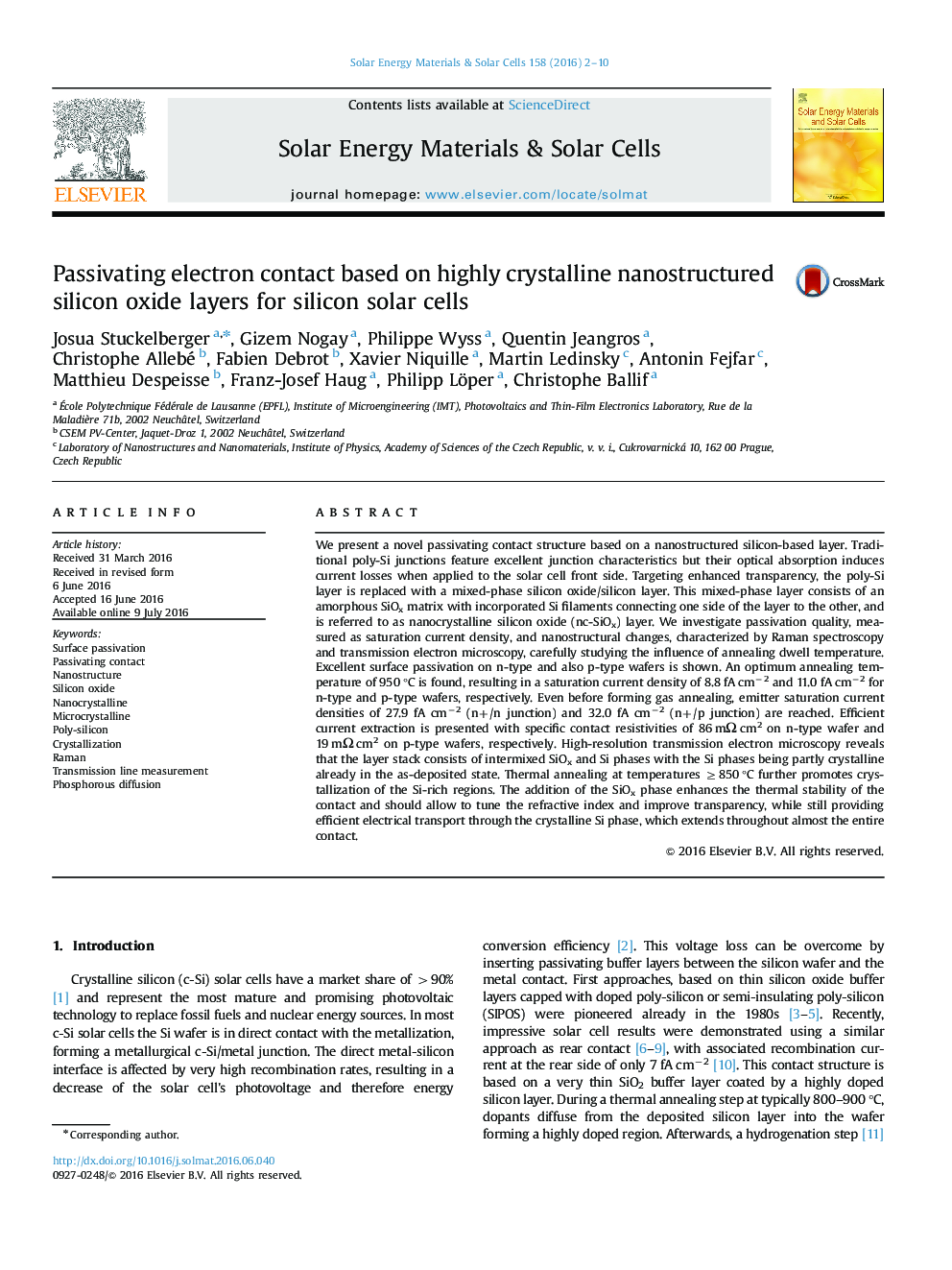| کد مقاله | کد نشریه | سال انتشار | مقاله انگلیسی | نسخه تمام متن |
|---|---|---|---|---|
| 6457411 | 1361708 | 2016 | 9 صفحه PDF | دانلود رایگان |
• Novel surface passivating electron front contact is presented.
• Doped nanocrystalline silicon is embedded in silicon oxide matrix.
• Highly crystalline layer are processed with short annealing times.
• Excellent passivation with high thermal stability is demonstrated.
• Additional deposited oxide phases support chemical silicon oxide.
We present a novel passivating contact structure based on a nanostructured silicon-based layer. Traditional poly-Si junctions feature excellent junction characteristics but their optical absorption induces current losses when applied to the solar cell front side. Targeting enhanced transparency, the poly-Si layer is replaced with a mixed-phase silicon oxide/silicon layer. This mixed-phase layer consists of an amorphous SiOx matrix with incorporated Si filaments connecting one side of the layer to the other, and is referred to as nanocrystalline silicon oxide (nc-SiOx) layer. We investigate passivation quality, measured as saturation current density, and nanostructural changes, characterized by Raman spectroscopy and transmission electron microscopy, carefully studying the influence of annealing dwell temperature. Excellent surface passivation on n-type and also p-type wafers is shown. An optimum annealing temperature of 950 °C is found, resulting in a saturation current density of 8.8 fA cm−2 and 11.0 fA cm−2 for n-type and p-type wafers, respectively. Even before forming gas annealing, emitter saturation current densities of 27.9 fA cm−2 (n+/n junction) and 32.0 fA cm−2 (n+/p junction) are reached. Efficient current extraction is presented with specific contact resistivities of 86 mΩ cm2 on n-type wafer and 19 mΩ cm2 on p-type wafers, respectively. High-resolution transmission electron microscopy reveals that the layer stack consists of intermixed SiOx and Si phases with the Si phases being partly crystalline already in the as-deposited state. Thermal annealing at temperatures ≥850 °C further promotes crystallization of the Si-rich regions. The addition of the SiOx phase enhances the thermal stability of the contact and should allow to tune the refractive index and improve transparency, while still providing efficient electrical transport through the crystalline Si phase, which extends throughout almost the entire contact.
Journal: Solar Energy Materials and Solar Cells - Volume 158, Part 1, December 2016, Pages 2–10
